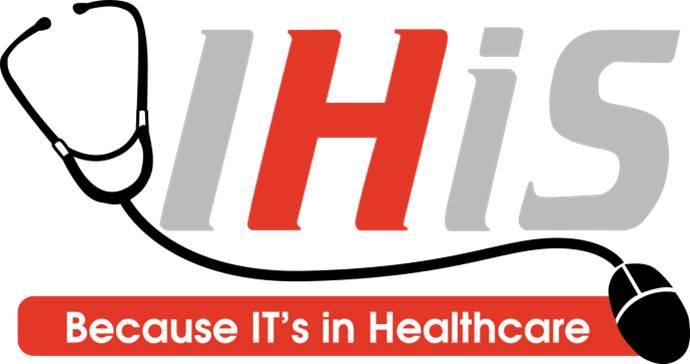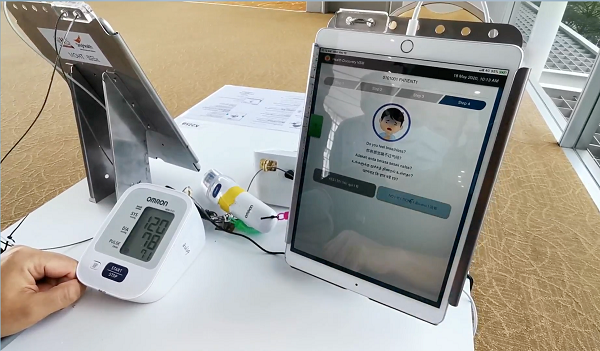iText 7 Core: Generating COVID-19 recovery reports in Singapore
Learn how iText 7 forms a crucial part of the purpose-built integrated system for COVID-19 recovery reporting, developed by Integrated Health Information Systems (IHiS) in Singapore.

Background
Since the beginning of the COVID-19 pandemic, a crucial part of the response has been the development and fast tracking of HealthTech solutions to help combat the disease across the world. With Singapore being one of the world’s most digital-first nations, its public healthcare IT provider Integrated Health Information Systems (IHiS) has been at the forefront of this initiative. Formed in 2008 from the existing IT departments of Singapore’s healthcare clusters, its aim is three-fold. To use technology to achieve service excellence and value, to transform care delivery, and to improve patient care.
As part of Singapore’s Smart Nation Initiative launched in 2014, healthcare is one of the key areas which have been transformed by tech-enabled solutions. Over the last decade and a half, IHiS has worked with both public and private healthcare institutions to introduce innovative, state-of-the-art systems. In recent years, a number of TeleHealth initiatives were rolled out, one of which was Smart Health Remote Vital Signs Monitoring (VSM). This system enabled the remote monitoring of the blood pressure, blood glucose, or weight of patients with conditions such as hypertension, diabetes, and heart or pulmonary diseases.
However, as COVID-19 spread around the world throughout 2020, over 50 new HealthTech projects and programs in Singapore were introduced by IHiS and their partners to manage the pandemic and care for patients. During the initial phase of the pandemic, the rapid increase of patient numbers called for a solution to care for lower risk COVID-19 patients to be cared for outside acute hospital facilities. IHiS worked with medical providers to set up specialized Community Care Facilities (CCFs) to house patients who were clinically well but had tested positive for the virus, preserving hospital facilities for higher risk patients.
The IHiS team realized that the existing off-the-shelf commercial system for VSM in use at the Public Health Institutions (PHIs) was not up to the task of meeting the operational demands of the new CCFs. Thus, the team embarked upon building a custom in-house solution to provide real time interaction and data feed to track patients’ compliance and flag patients who may require more medical attention. By providing a way for patients to easily take and submit their own vital signs data, they could relieve the burden on healthcare professionals and allow them to focus on more urgent tasks. In addition, the system would automatically alert them whenever the data indicated medical intervention was required.
IHiS assigned a 5-person team to work on the development of the Health Discovery solution. Despite the team’s small size, within a week they had an initial VSM Kiosk in operation, quickly followed by a dashboard to help the clinicians on the ground who were facing a daily surge in patients. Since the dashboard went live on 1st May 2020, the team has added a raft of feature enhancements to Health Discovery. However, a recent additional feature requirement was to allow healthcare professionals to be able to print reports from the received data in PDF format. Thus, the team began investigations into how to integrate a PDF library into their existing architecture.
Goals
- Find a suitable library for PDF generation and printing capabilities.
- Enable healthcare professionals working in Singapore’s CCFs to request VSM reports on-demand.
- Dynamically populate report templates with the requested Health Discovery data.
Challenges
- Get the team up to speed with the chosen library.
- Integrate the PDF library into the existing Health Discovery platform.
- Achieve a rapid time to market.
Solution
Finding a suitable PDF library was quickly achieved, since other IHiS teams had prior experience with using iText 7 within their own solutions over a number of years. Desmond Oh, Lead Engineer at IHiS told us. The team got to work, and rapidly developed a proof of concept (POC) for PDF generation using the .NET variant of iText 7 Core. As Desmond points out, “Since our requirements were to create formatted PDF reports from a database for printing, we determined we did not require any of the add-on functionality of the iText 7 Suite SDK”.
Generating well-designed and formatted reports for printing is naturally a simple task in iText 7, and we have a wealth of documentation and examples on our Knowledge Base for both Java and .NET (C#), along with extensive API documentation for developers to refer to.
|
“Implementing the iText 7 PDF library into our integrated Health Discovery solution was straightforward, and so we required little support from iText.” |
 |
Desmond Oh, Lead Engineer, |
As for the architecture developed by the Health Discovery team to enable PDF reports, this was similarly straightforward. The API to generate PDFs is hosted inside a container on an AWS Cloud server, and the Health Discovery client retrieves the requested VSM data before calling the PDF generation API. A formatted report template is then populated with the data, and the resulting PDF is streamed back to the client ready to be printed by the user.

|
“iText 7 Core met all our requirements to print formatted PDF reports, and we would recommend it to anyone looking for a similar solution.” |
 |
Desmond Oh, Lead Engineer, |
Result
After developing the initial POC in the first quarter of 2022, the team rapidly implemented the capability to generate the required PDF reports. Since the creation of well-formatted documents is a piece of cake for the iText PDF library, the team unsurprisingly encountered no difficulties integrating iText 7 Core into their existing architecture. Within the same quarter, their PDF generation API went live and was quickly and reliably generating the PDF reports for the Health Discovery solution.

“Implementing the iText 7 PDF library into our integrated Health Discovery solution was straightforward, and so we needed little support from iText”, says Desmond. With the extensive built-in support for rendering tabular content in the iText 7 Core high-level API, it was a simple task to populate the report template with the required data. In addition, iText 7 automatically manages things like text overflow and wrapping for table cells, so there is no need for developers to worry about such issues. As Desmond concludes, “iText 7 Core met all our requirements to print formatted PDF reports, and we would recommend it to anyone looking for a similar solution.”
About
IHiS is a multi-award-winning healthcare IT leader that digitizes, connects, and analyses Singapore’s health ecosystem. Its ultimate aim is to improve the Singapore population’s health and health administration by integrating intelligent, highly resilient, and cost-effective technologies with process and people.
Transforming healthcare through smart technology, IHiS has garnered more than 130 awards for its innovations. It supports more than 50,000 healthcare users in Singapore’s health ecosystem through the application of clinical informatics, computer science, data science, mechatronics, standards-based IT that enables information exchange as well as cross boundary workflows, analysis, statistical and machine learning techniques to discover insights.